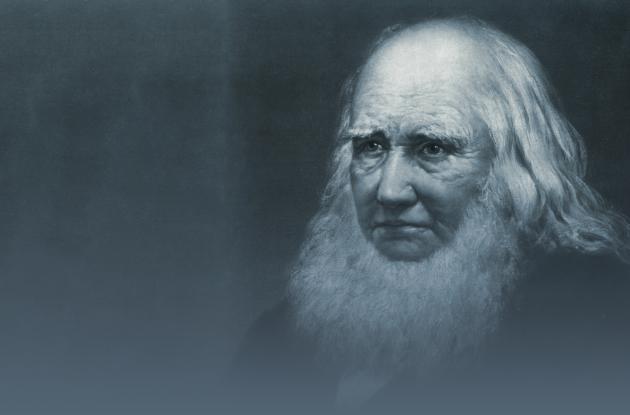The songwriter Grundtvig
NFS Grundtvig considered himself unmusical. Yet his name is on hundreds of songs. Dive into his songwriting process with us.
Grundtvig was many things: schoolmaster, pastor, philosopher, historian, philologist, politician, but perhaps he entered the hearts of the Danes most deeply as a songwriter. We know him as the poet who crafted many of the songs that follow the Danes through life, even into death. Many of the songs are carefully cobbled together from older songs, mythological material and biblical images, in the same way that the skilled craftsman uses the available nails in his creation. 1,500 songs and hymns were created during his long life.
In Royal Danish Library's collections there are preliminary works and other first-hand material on many of them. We have got hold of three of the most popular ones.
Nu falmer skoven trindt om land (English: Harvest song)
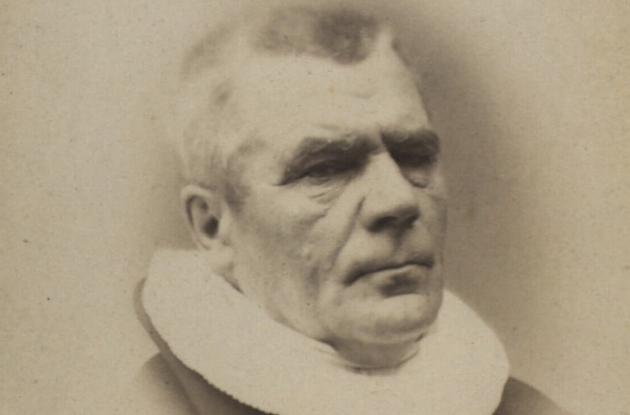
Photo: Christian Anton Larsen
"Nu falmer skoven trindt om land" or as Grundtvig simply called it "Harvest song" was commissioned. It was the parish priest in Mern, Peter Rørdam, who was to use the song for a harvest service. The always productive Grundtvig was quick to turn something out - after all, he managed to write up to 1,500 hymns and songs throughout his life - so it did not take long from the time of the order before Grundtvig could send Rørdam his first draft.
The golden fields have become barren and black, and the birds of summer have sought south to milder skies.
But the draft was not at all to the parish priest Mern's taste: Rørdam of course thanked Grundtvig, but he wrote at the same time that, in his opinion, the hymn was "trøv", or "rubbish". Grundtvig angrily wrote a new draft, and this time the text was more to the discerning parish priest's taste.
Grundtvig's hymn describes the decay of autumn and the symbolic death of the year: The golden fields have become barren and black, and the birds of summer have sought south to milder skies.
But still, we can face winter with gratitude. Because all around the farms, the gifts of the harvest are hidden away for the winter: the golden grains lie in barns and on lintels - and they will take us safely through the cold days. The psalm compares these fruits of the harvest to the living word of God - a parallel to the parable of the sower.
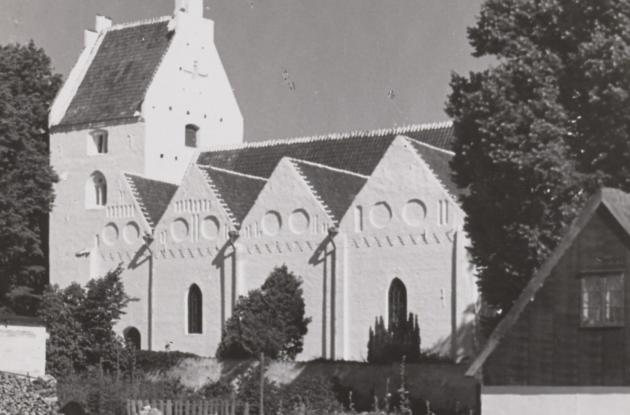
Photo: Det Kgl. Bibliotek, Arkitekturfotografi
Just like the grain that grows in the fields of the earth, the word of God also grows in the heart of man. And just as the grain now guides man through the decay and death of the year, so the word of God will guide man through the autumn and winter of life - until the summer and the resurrection to paradise.
Grundtvig was, in his own words, very unmusical. But of course Grundtvig's new hymn had to have a melody before it could be useful at Rørdam's harvest service. For his hymns, Grundtvig often used existing melodies that suited the purpose of the verse – either melodies from other hymns or melodies from popular songs of the time. For "Nu falmer skoven trindt om land" (English: Harvest song) Grundtvig used a German folk melody from 1640.
But Grundtvig's hymn has since been given its own musical expression, namely Johan Henrik Nebelong's (1847-1931) melody from 1889.
Vær velkommen, Herrens år (English: Welcome, Year of Our Lord
The hymn "Vær velkommen, Herrens år" (English: Welcome, Year of Our Lord) is based on an old Danish Advent hymn from 1556 in ten verses with the first line reading Wer Welkommen, Herrens Aar
. It was printed for the first time in 1556 in "Tre merckelige viser" and is also known from Sophie Sandberg's book of wisdom, which can be found in the Manuscript Collection at Royal Danish Library. Here, in 1849, Svend Grundtvig found the old Advent hymn, which he immediately showed to his father NFS Grundtvig, who immediately rewrote the hymn. The hymn was soon afterwards printed in a large number of hymn books, and therefore also found its way to The Danish Psalm Book.
It is unknown to what tune the hymn was originally sung. The melody that we know today was composed by AP Berggreen (1801-1880) in 1852, the same year that he composed another well-known Christmas melody, namely the melody for "Julen har englelyd" (English: "Christmas has an Angelic Sound").
The New Year's version of "Vær velkommen, Herrens år" (English: Welcome, Year of Our Lord) is also by Grundtvig. It is based on a secular New Year's song which is known to have been sold as a broadsheet in 1693, but which undoubtedly has older roots. The secular New Year's song with the first line sounding Velkommen Nytaar! Velkommen vær!
(English: Welcome New Year! Be welcome!) inspired Grundtvig to create a New Year's hymn for the bourgeois New Year, and this on the same model as the Advent hymn.
The New Year's hymn was first recorded in The Danish Psalm Book in 1953, and that was because the State Radio played it every New Year's Eve.
Jeg gik mig ud en sommerdag (English: I went out one summer's day)
The summer song "Jeg gik mig ud en sommerdag" (English: I went out one summer's day) is also based on an older version. In fact, the song is found over most of the Nordic region. The first time we come across the melody in a Danish context is in Knud Lyne Rahbek and Rasmus Nyerup's collection of folk songs: "Udvalgte danske viser fra Middelalderen", which was published in four volumes of text and a volume of melodies between 1812 and 1814.
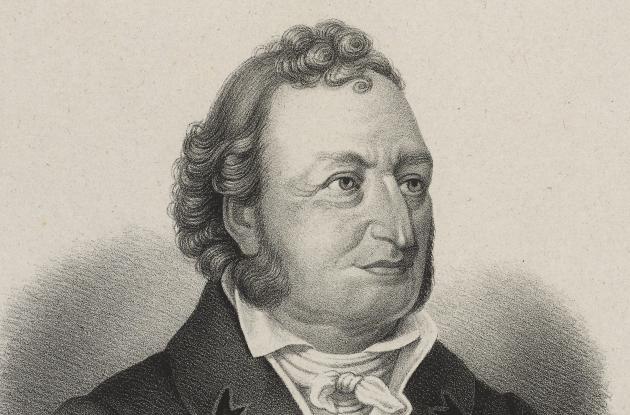
Photo: Hornemanns Maleri
The book was created by calling for folk songs and melodies to be submitted to the two authors. Most of the submitted tunes were for tunes whose text was found in one of the first four volumes of the tune collection: after all, that was the whole point of publishing a volume of tunes. But there were also melodies for texts that could not be found among the printed ones.
Rather than discarding these melodies, Nyerup and Rahbek collected them in a section in the fifth volume under the title "Additions of Melodies, mostly to Songs, which are not in the Collection". And it is precisely here in this section of Nyerup and Rahbek's fifth volume that the melody for "Jeg gik mig ud en sommerdag" (English: I went out one summer's day) appears for the first time in print - and largely in the form we know it today.
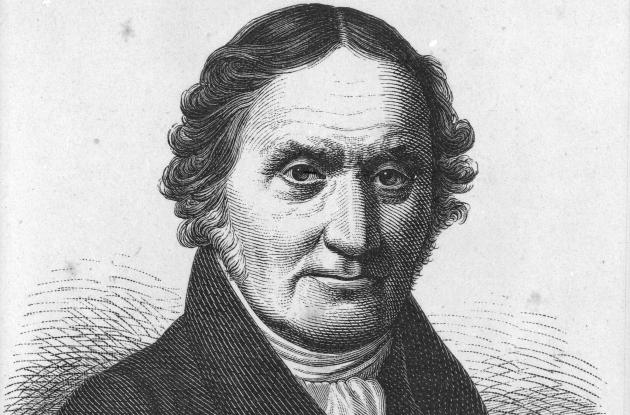
Photo: Det Kgl. Bibliotek
Unfortunately, it is no longer known who submitted the melody to Rahbek and Nyerup, and therefore the early history of the melody is not known.
In contrast to the melody and first stanza given in the melody supplement, whose origin is thus lost in history, the origin of the text is easier to trace. Because it is NFS Grundtvig who, 33 years after the Nyerup and Rahbek verse collection, writes the remaining ten stanzas that we use today. This happens in Grundtvig's collection of folk songs "Kæmpeviser til Skole-Brug". Here Grundtvig builds on the first stanza to create his very own poem. And it is from this poem that the High School Songbook takes its total of 11 stanzas.
However, this does not happen without drastically shortening Grundtvig's poem, which actually contains 21 stanzas!
Grundtvig's first five stanzas, four of which are also found in the High School Songbook, contain a tribute to Danish nature. The tribute is conveyed through the song of a small bird, and each stanza ends with a refrain: In the deep valleys, between nightingales, and the other birds small, as speech.
This model with two lines of verse followed by a chorus is also found in many folk songs.
In the deep valleys, between nightingales, and the other birds small, as speech.
Then follow another five stanzas (stanzas 5-10), which, unlike the first five, are not included in the High School Songbook. In these stanzas, the little bird no longer sings about the Danish nature, but about the Danish mythical past and about mythical creatures such as elves, trolls and mermen.
In the next three stanzas (stanzas 11-13), which are again included in the High School Songbook, the poem turns to the poet as a person.
In stanza 14, which is again not included in the High School Songbook, the poet refers to the bird as 'Freia's Bird'. Freia, the fertility goddess of Norse mythology, had as her characteristic the bird-crest Valshamr, with which she could fly between the different worlds in Norse mythology.
In stanzas 15-17, which are again included in the High School Songbook, the bird flies over Denmark from Øresund to Dannevirke and sings to Dance, to School and to Church
. The stanzas thus contain a tribute to Denmark and to the Danish language.
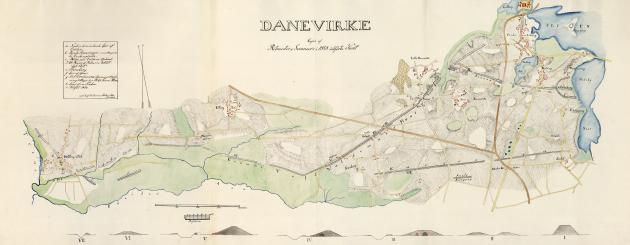
Photo: I. G. Burman Sommer Becker
In the subsequent two unselected stanzas (stanzas 18 and 19), old Denmark is resurrected again through the bird's song. Everything that has been done is reversed, and "then all the Gates of Gladhjem will burst" – Gladhjem is the land in which Valhalla is located.
Stanza 20 is used as the last stanza in the High School Songbook, in which Denmark glows like red gold in the sun's rays.
Through this selection, the text of the High School Songbook appears as a song completely without references to the Old Norse world of faith. In this version, the song becomes a tribute to nature and the nation, while Grundtvig's original version also contained a longing for a lost antiquity.
Grundtvig created a poem about a rebirth of Nordic antiquity. This poem has then again been adapted so that "Jeg gik mig ud en sommerdag" (English: I went out one summer's day) appears as a pure tribute to the Danish nature. And it is in this form, as a Danish seasonal song, that we sing it today.
Grundtvig in our collections
Find, for example, Grundtvig's handwritten sermons or speeches. We continue to digitise more of his works.
